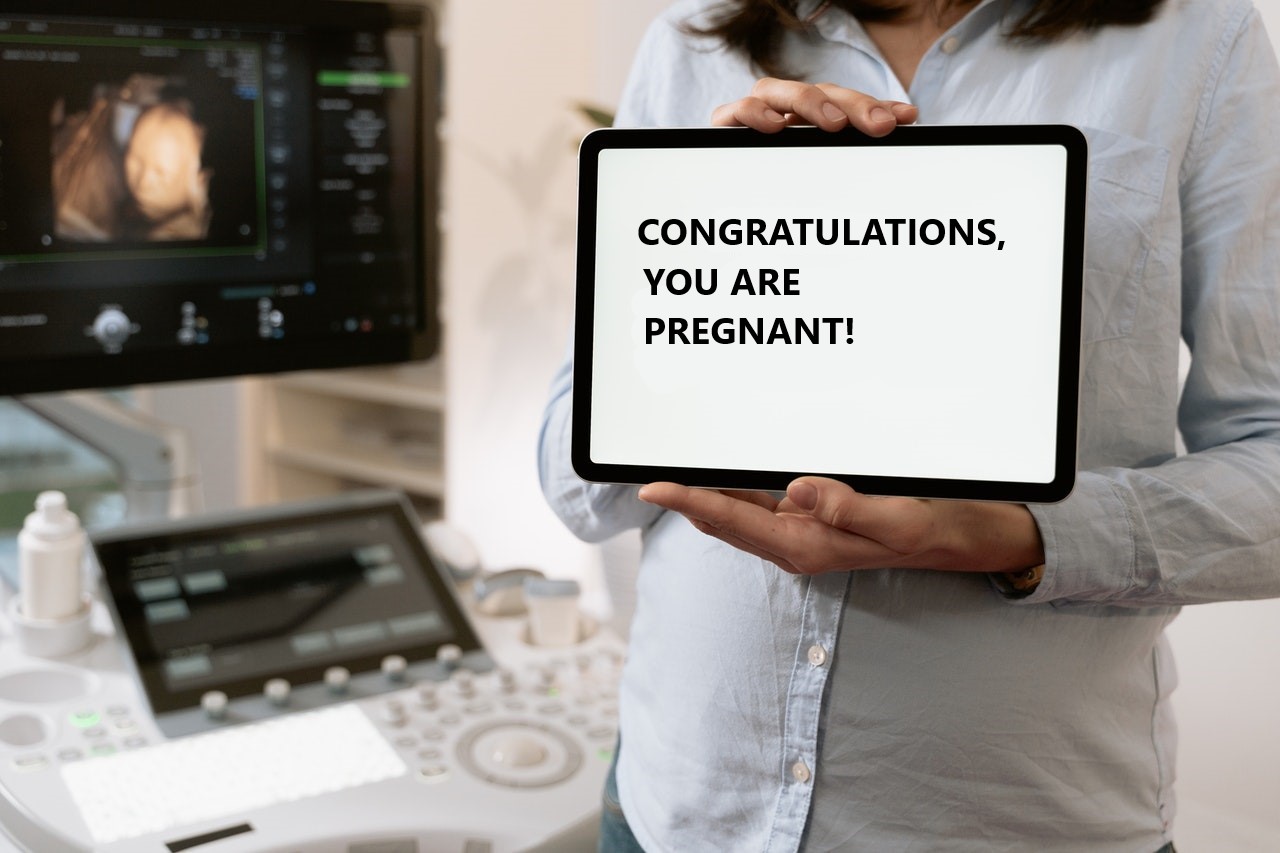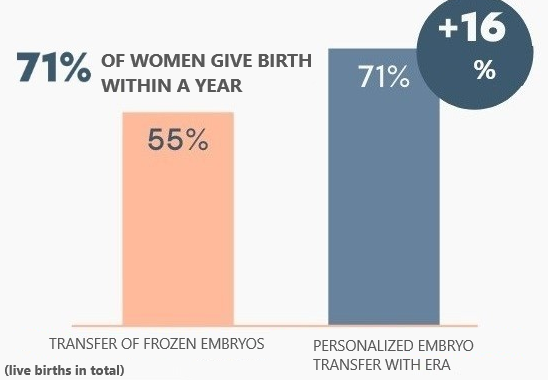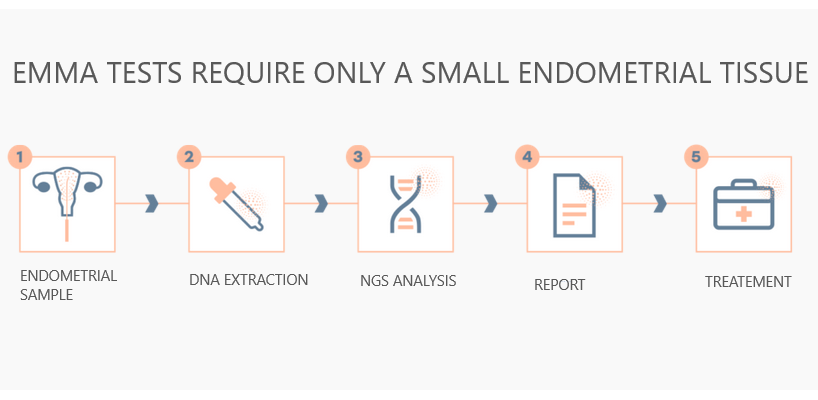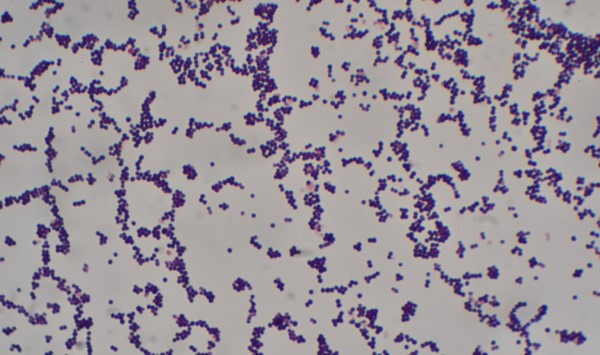Additional examinations in case of failed ART procedures

Endometrial receptivity (uterine receptivity)
Endometrial receptivity is a complex process that provides the embryo with the opportunity to attach and develop in the uterus. In most cases, the window of implantation extends from day 19 to day 21 of the menstrual cycle. As a result of certain inflammatory or anatomic conditions, this window might be narrowed or shifted to preclude normal implantation, leading to infertility or pregnancy loss.

ERA: Endometrial receptivity analysis
The lining of the uterus (endometrium) plays a key role in the implantation of the embryo. Numerous studies have shown that endometrial receptivity is limited in time and strongly depends on each individual.
Together with Igenomix, our center offers personalized embryo transfer using endometrial biopsy and genetic testing (ERA: Endometrial Receptivity Analysis) to determine the optimal time window for the implantation of the embryo into the uterus.

EMMA – Endometrial Microbiome Metagenomic Analysis
EMMA – Endometrial Microbiome Metagenomic Analysis
Latest research has shown that the lining of the uterus is not sterile, but rather populated by a number of non-pathogenic bacteria that make up the so-called endometrial microbiome. This is a population of microbes that create a normal endometrial environment and do not cause problems when they are balanced. Any disruption of the balance, of for example lactobacilli in the uterus, has been shown to be a likely cause of fertility problems. Our health center offers its patients the possibility to have their uterine lining microflora examined using a simple endometrial biopsy procedure and the advanced Next Generation Sequencing (NGS) method, which is carried out by our contracting partner Igenomix. This helps us to precisely profile the DNA and thus determine the type of bacteria found in the uterine mucosa.

ALICE - Analysis of Infectious Chronic Endometritis
Chronic endometritis (inflammatory condition of the endometrial mucosa) is quite a common, and often underestimated condition leading to poor implantation outcomes or frequent miscarriages.
It is typically caused by pathogenic bacteria that are not naturally part of the mucosa (Streptococcus sp., Enterococcus sp., Staphylococcus, Mycoplasma and Ureoplasma sp.). The pathogenic bacteria can be detected using the same procedure as with EMMA or ERA (or even just a biopsy for all three tests). Based on the result, the doctor will then prescribe you either an antibiotic therapy or, in case that dysbiosis has been diagnosed by EMMA, a probiotic therapy.